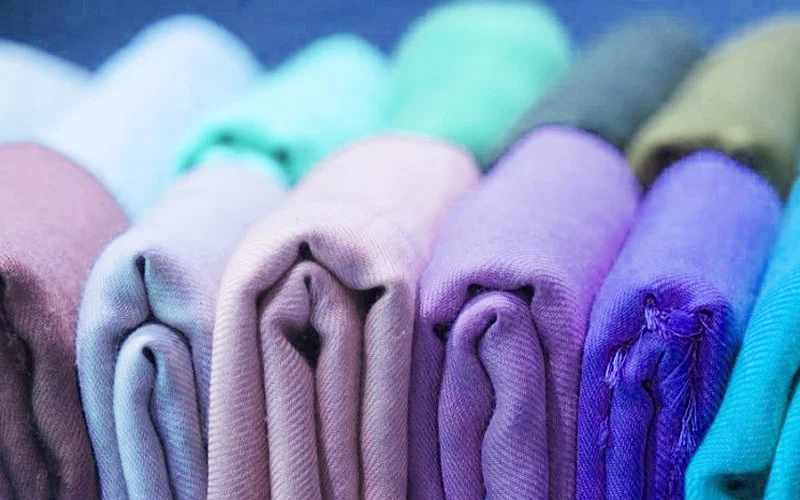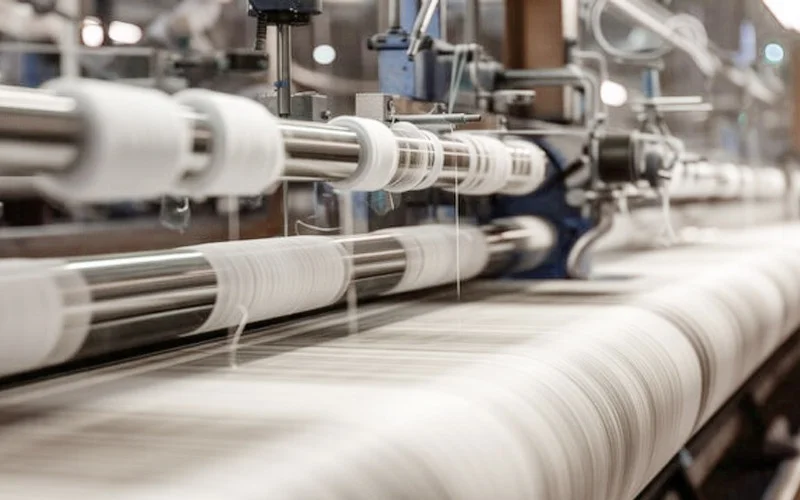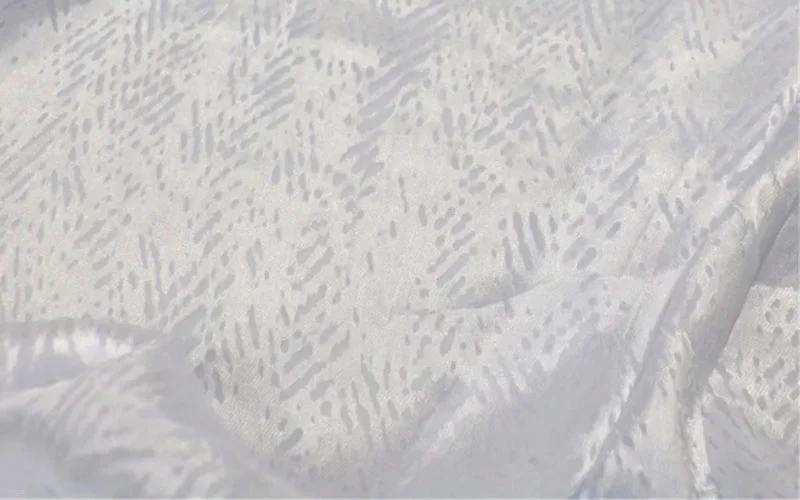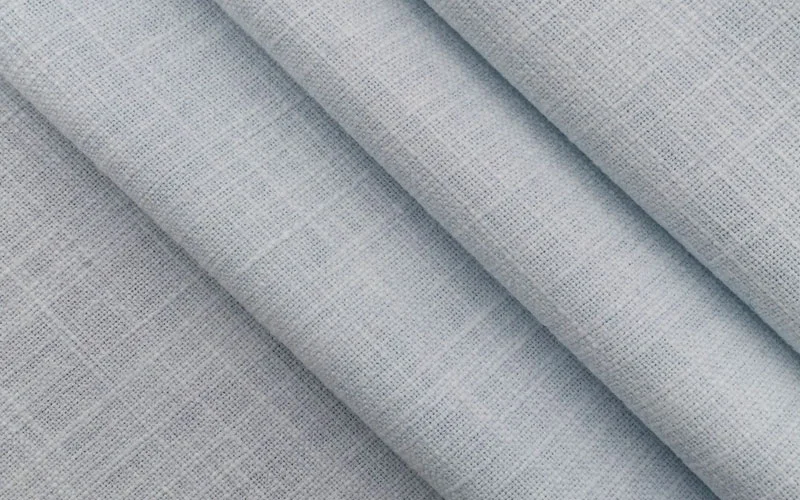Blended cotton fabric is a type of fabric that is made by combining cotton with another type of fiber, What is Blended Cotton Fabric?

By blending cotton with other fibers, fabric manufacturers can take advantage of the qualities of both materials to create a fabric that has the advantages of each.
What is Blended Cotton Fabric
Blended cotton fabric refers to textiles that combine cotton fibers with other materials, such as polyester, rayon, or linen. This blending process enhances the fabric’s properties, making it suitable for a wide range of uses.
Blended cotton fabrics offer a balance of comfort, durability, and affordability, making them popular choices in both clothing and household textiles. Understanding their composition helps consumers make informed choices based on their specific needs.
Unlike pure cotton quilting fabric, Blended Cotton Fabric is used by a wider range of people.
What is Cotton Blend Fabric Made Of

What is Blended Cotton Fabric, it is better to know What is Cotton Blend Fabric Made Of, so that it is more convenient and more in line with your requirements when choosing
Cotton blend fabric is made by combining cotton fibers with one or more other types of fibers. The composition of a cotton blend fabric can vary depending on the specific characteristics desired in the final material. Here are some common types of fibers that are blended with cotton to create different cotton blend fabrics:
Polyester:
Cotton-polyester blends are a popular choice. These blends offer a mix of the natural softness of cotton with the durability and wrinkle resistance of polyester.
Rayon:
Blending cotton with rayon can result in a fabric that is soft, breathable, and drapes well. Rayon adds a silky feel to the fabric.
Linen:
Combining cotton with linen creates a fabric that is breathable, durable, and has a natural texture. Linen adds a characteristic crispness to the blend.
Spandex or Elastane:
Blending cotton with spandex or elastane adds stretch and flexibility to the fabric, making it ideal for form-fitting clothing and activewear.
Acrylic:
Blending cotton with acrylic can create a fabric that is soft, lightweight, and warm. Acrylic adds warmth without adding weight to the fabric.
Other Synthetic Fibers:
Cotton can also be blended with fibers like nylon or polypropylene to create fabrics with specific properties such as moisture-wicking, water resistance, or enhanced durability.
The ratio of cotton to the other fibers in the blend can vary, affecting the overall characteristics of the fabric. By blending cotton with other fibers, manufacturers can create fabrics with a wide range of properties, combining the best features of each fiber for specific applications and preferences.
What is Blended Cotton Fabric: Types and Categories
What is blended cotton fabric? It can be intuitively understood from the type distinction.
Cotton-Polyester Blend

A cotton-polyester blend is a fabric that combines cotton and polyester fibers. This blend is popular in clothing and home textiles because it combines the natural, breathable properties of cotton with the durability and wrinkle resistance of polyester.
Durability:
Polyester is more resistant to stretching and shrinking compared to cotton, so blends are often more durable.
Wrinkle resistance:
Polyester helps reduce wrinkles and creases, making clothes easier to care for.
Breathability:
The presence of cotton ensures some breathability and comfort compared to a pure polyester fabric.
Easy care:
Blends are typically easier to care for than pure cotton garments, as they are less prone to wrinkling and shrinking.
Affordability:
Blends can be more cost-effective than pure cotton fabrics.
This blend is commonly used in a wide range of products, from t-shirts and bedding to uniforms and workwear. Its specific ratio of cotton to polyester can vary, affecting the feel and properties of the fabric
Cotton-Rayon Blend

A cotton-rayon blend is a fabric that combines cotton and rayon fibers. Rayon is a semi-synthetic fiber made from cellulose derived from wood pulp or other plant material.
When blended with cotton, it creates a fabric that combines the properties of both fibers.
Softness:
Rayon is known for its silky, soft feel, which can enhance the overall comfort of the fabric.
Breathability: Both cotton and rayon are breathable fibers, making the blend comfortable to wear in warm weather.
Drape:
Rayon adds a fluid drape to the fabric, giving it a more elegant and flowing quality compared to pure cotton fabric.
Moisture absorption:
Rayon has good moisture-absorbing properties, which helps in keeping the fabric dry and comfortable.
Slightly less durable:
While rayon can add softness and drape, it is generally less durable than cotton or polyester, so the blend may not be as long-lasting as a pure cotton or polyester fabric.
Cotton-rayon blends are often used in a variety of garments like dresses, blouses, and lightweight summer clothing due to their combination of comfort, breathability, and drape.
The specific ratio of cotton to rayon can vary in different blends, influencing the overall feel and properties of the fabric.
Cotton-Linen Blend

A cotton-linen blend is a fabric that combines cotton and linen fibers. Linen is a natural fiber made from the flax plant, known for its durability, breathability, and natural texture. When blended with cotton, it creates a fabric that combines the benefits of both materials.
Breathability:
Both cotton and linen are highly breathable fibers, making the blend perfect for warm-weather clothing.
Comfort: Linen adds texture and a cool, crisp feel to the fabric, while cotton adds softness, resulting in a comfortable blend.
Durability:
Linen is known for its strength and durability, so the blend can be more robust than pure cotton fabric.
Wrinkle-prone: Linen is prone to wrinkling, but the addition of cotton can help reduce wrinkling to some extent.
Natural aesthetic:
The blend often has a natural, rustic look due to the texture of linen.
Cotton-linen blends are commonly used in summer apparel like shirts, dresses, and lightweight trousers. The specific ratio of cotton to linen can vary in different blends, affecting properties like breathability, softness, and durability. Overall, this blend offers a balance between the comfort of cotton and the natural, textured appeal of linen.
Reasons for Blending Cotton with Other Fibers

What is blended cotton fabric? The article explains a lot. Why do people have a demand for blended cotton fabric?
Enhanced Durability:
Blending cotton with synthetic fibers like polyester or nylon can improve the overall durability and longevity of the fabric. The synthetic fibers add strength and resilience to cotton, making the fabric more robust and resistant to wear and tear.
Improved Comfort:
Blending cotton with fibers like modal or bamboo can enhance the softness and drape of the fabric, improving comfort for the wearer. These fibers often have moisture-wicking properties, making the fabric more breathable and comfortable in various climates.
Reduced Wrinkling:
Fabrics blended with fibers like polyester are less prone to wrinkling compared to pure cotton fabrics. This makes them easier to care for and maintain, especially in items like shirts and trousers that benefit from a more polished look.
Enhanced Performance:
Blending cotton with fibers like spandex adds stretch and flexibility to the fabric, making it suitable for activewear and other applications where stretch and recovery are important.
Color Retention:
Blending cotton with synthetic fibers can improve color retention in the fabric, reducing fading over time. This is particularly important for vibrant or dark-colored garments that are frequently washed.
Cost Efficiency:
Blending cotton with other fibers can sometimes reduce production costs while maintaining the desired characteristics of the fabric. This can make the final product more affordable without sacrificing quality.
FAQs
What is Blended Cotton Fabric?
Blended cotton fabric combines cotton with other fibers like polyester or rayon, enhancing durability, wrinkle resistance, and moisture-wicking. It retains cotton’s softness and breathability, making it ideal for clothing and home textiles, offering a balance of comfort and functionality.
Is blended cotton fabric easy to care for?
Blended cotton fabrics are often easier to care for than pure cotton fabrics. They may be more resistant to wrinkling and shrinking, requiring less ironing and special care during laundering.
Does blended cotton fabric shrink?
Blended cotton fabrics with synthetic fibers like polyester are less likely to shrink compared to pure cotton fabrics. However, it’s always best to follow the manufacturer’s care instructions to prevent any unwanted shrinkage
Conclusion
In conclusion, blended cotton fabrics combine the best qualities of cotton with other fibers to create versatile textiles suitable for diverse applications. By understanding their composition and characteristics, consumers can make informed choices that meet their needs for comfort, durability, and style.
